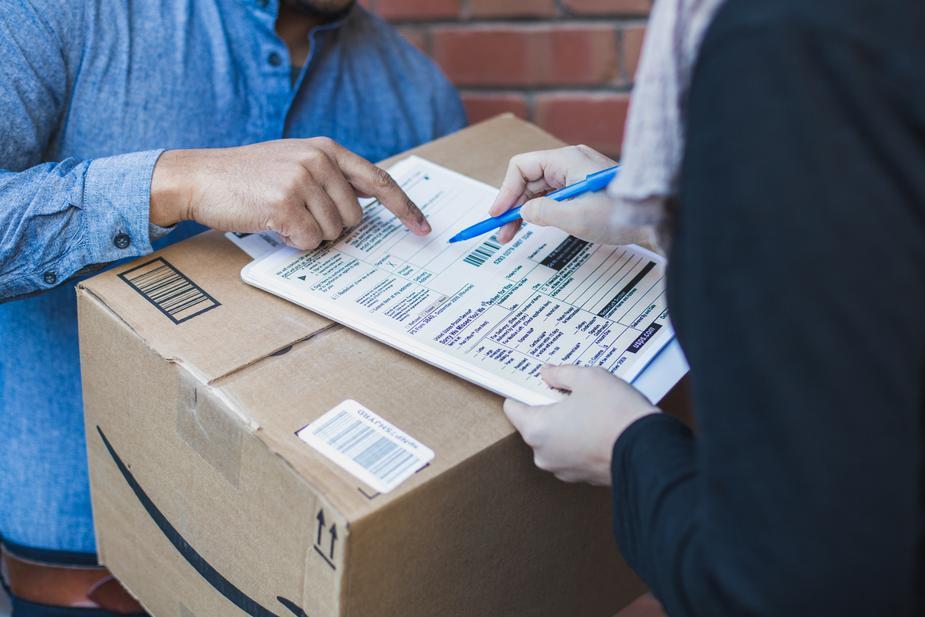If you're looking to grow your ecommerce business, expanding beyond your borders could be a great next step—but that means you need to figure out how to ship internationally.
To do international shipping right, you’ll need a strategy that works for you and your business. You don’t need to knoweverything about shipping, but you do need to understand the available options, and find an approach that will work again and again.
There are a lot of reasons you might not be shipping internationally right now. Maybe you’re just starting to consider it as an option. Or maybe you’ve even tried once or twice and you’d rather stick to your local or domestic market.
Selling beyond your borders can be an important growth area for your business, even if youonly ship some products internationally, so it’s worth tackling the logistics head-on. Consider these figures:
- According toPitney Bowes, as of 2017,70% of online shoppers shop internationally.That’s up 6% from 2016.
- That same Pitney Bowes report states nearly93% of online retailerseither already offer, or plan to offer, international shipping by 2019.
- Statistahas theaverage order value of a international sale at $147 USD.That’s17% highercompared to an average domestic sale.
- Retailers who offer premium international shippinggrow 60% times fasterthan those that don't.
These figures show that online shoppers have come to expect international shipping, and ecommerce businesses are increasingly meeting that expectation. Shipping internationally creates an opportunity for stores like yours to sell to a larger audience.
Here’s what we’ll cover in this post so you can make better shipping decisions and expand your business on your terms.
- Building an international shipping strategy
- Shipping internationally through Shopify
- What to charge international customers for shipping
- Finding country regulations
- Preparing packages
- Working with multiple carriers
- Pricing out your shipping

The Shopify guide to shipping and fulfillment
Boost customer satisfaction while driving sales growth for your ecommerce business with an effective shipping and fulfillment strategy. Use this guide to create a plan that covers all aspects of shipping and fulfillment, from how much to charge your customers to choosing the right fulfillment method.
Get our shipping and fulfillment guide delivered right to your inbox.
Almost there: please enter your email below to gain instant access.
We'll also send you updates on new educational guides and success stories from the Shopify newsletter. We hate SPAM and promise to keep your email address safe.
Building an international shipping strategy
While it's difficult to give a definitive list of best practices that apply to every business, there are a few central decisions you’ll need to consider for your international shipping strategy.

Where and what you’ll ship
You’ll first need to identify where in the world you’ll ship to and which products you’ll ship.
Unsure which markets you should expand to first? Here’s a few indicators that can help narrow it down.
- Start small. And close.By keeping the shipment close to home, you can set realistic expectations for customers on delivery times and rates. Starting small and close also allows you to get a feel for what it takes to expand your shipments.
- Track current demand.Check out yourshop’s traffic analyticsand see which markets or countries are already visiting your online store. You can also gauge interest by direct customer requests to sell to their market. Repeat visits or high traffic could show interest in your products or offerings.
- 考虑任何扩张市场的主要语言ob欧宝娱乐app下载地址nsion.Communication is essential when dealing with customers. If you’re fluent in a few languages, consider expanding into the countries that speak those languages first. If you only speak one language, find other countries or markets where that language is prominent.
- Identify non-domestic markets that are a good business fit.有markets around the world that you feel suit your business better than others? Some research may be required here. Checking into ecommerce penetration could be a good first step (explore that data here). Dig into the consumer trends and tastes of those markets. An item that’s a celebratory gift in the US may mean something different in South Korea, for example.
You’ll now need to consider what to ship. You may want to offer your entire product line. However, before you start shipping all over the world think about these aspects of your products and your business.
- Building on the points above, are thereitems that would appeal to the international market(s)you’re looking to ship to?
- Lightweight and smaller itemswill be more cost effective to ship and easier to package.
- The more durable the product, thebetter.Shipping products that break easily may increase the chances of a less-than-satisfactory delivery. If you decide to ship them,invest in sturdy packaging!
Get familiar with country rules and regulations
Once you have an idea of what regions offer the most immediate opportunities, and which products you’ll be sending, it’s time to check into country-based rules and regulations.
Some countries prohibit items outright; others may limit them. Being informed on the rules and regulations that exist and which may impact your shipments can help ensure a smooth delivery.
There are a few ways you can get this information:
- UPS has a tool that showscountry-specific rules and regulationsby origin and destination countries.
- Check and see if any of your products—or components of your products—are listed as “dangerous goods” while being shipped. In general, a "dangerous good" is defined as a product that may cause harm during transit. The best place for this info would be a country's government website.Canadaand theUKprovide great examples.

How to ship internationally with Shopify Shipping
Shopify offers merchants in the United States and Canada access to discounted rates withUSPS,UPS,DHL Express, andCanada Post, so you’re already set up to compare their rates.
When you purchase international shipping labels through Shopify, the correct customs forms and documentation are automatically generated for you and can be printed on any standard printer. When you use DHL Express to ship, this documentation is electronically transmitted to customs–no additional paperwork necessary.
When you’re ready to get your shipments out the door, you also have the option to schedule a pickup for any UPS or DHL Express shipment.
See your Shopify Shipping rates
When considering which shipping carriers you may use, there are four factors to consider.
Costs
Using multiple carriers is one way to save on yourshipping costs.
Postal carriers are often cheaper, but can be slower and may not offer many options for package types and speeds. Express carriers are faster and provide more service options like insurance, but can be more expensive.
Do your research and price out postal, regional, and express carrier options. We’ll cover how to charge for international shipping below, but it’s good to know what’s available for your international shipping strategy.
Delivery options
Some customers will want their purchases right away, and others will be more willing to wait.
To best serve your customers, offer a good mix of delivery options. Providing a range of choices gives them the option to balance the tradeoff between timeline and price, and that might be the difference between a sale and an abandoned cart.
Tracking and insurance
Most carriers provide shipment tracking, so you and your customers can easily see up-to-date shipment statuses.
If you’re worried about a package becoming lost or damaged, insuring your shipments is the way to go.
Insurance is offered by most global express carriers and if it isn't automatically included in the cost of shipping, it's relatively affordable and straightforward to add.
When using postal carriers like USPS or Canada Post, several shipping services are available that include insurance in the price of shipping. You can use specific classes of shipment, like Priority Mail and Priority Mail Express for USPS or Priority or Xpresspost for Canada Post, to get automatic coverage. You can always pay for coverage using a different shipping service—usually a few dollars per $100 USD of declared value.
Whatever you choose, consider adding insurance to any package over $200 being shipped to another country. Doing so will add some peace of mind to both you and your customer.
Be transparent about fees
This might be the most important part of any international shipping strategy: Be as transparent and communicative as possible with your customers about shipping costs. Don’t surprise your customers with an unexpected total cost at checkout.
According to theBaymard Institute, nearly 60% of the cart abandonment they surveyed on ecommerce sites in 2017 was due, in part, to extra shipping fees and costs:

Source:Baymard Institute
One place you can communicate these costs is on yourpolicy pages.Clearly lay out how and where you ship products internationally, and what costs may be associated.
You can also do something as simple as adding flags to your top navigation to show your shipping availability, likePure Cyclesdid here.

Letting your customers know where you deliver to doesn’t have to just be about costs. A tool like theFree Shipping & Hello Barcan help you promote your shipping and rates to a global audience.
It’s best to use all options available to communicate shipping costs—or potential costs—to a customer, whether it’s on your homepage, product page, or on a policy page. It’ll set expectations for you both, which can help give the customer added confidence to complete their purchase.
What to charge for international shipping
In ourBeginner’s Guide to Shipping and Fulfillment, we included the chart below to help you list out the associated costs to ship a product.
| Cost of product | $12.00 |
| Packaging | $2.25 |
| Cost of shipping | $6.50 |
| Handling charges | $2.00 |
| Duties and taxes | $4.50 |
| Credit card fee | 2.9% |
| Profit margin | 50% |
| Total price | $56.00 |
Using this model can also help you determine a product’sfully landed cost.这是产品的总成本出售,the cost of shipping, duties and taxes included, as well as any other fees that may apply.
Let’s walk through the four highlighted cells above. All four contribute to how effectively you’ll ship around the world.
Packaging
Before you ship anything, you’ll need to get packaging supplies. You may need a few sizes of boxes to accommodate different sized shipments. You might also need cushioning, like bubble wrap or stuffing. You can get your packaging both online and at post offices or office supply stores.

In general, it’s best to keep your packaging sturdy but simple. No one wants to deal with three boxes of varying sizes when getting a single product from your business.
Trying to strike this balance of sturdy packaging and low cost may require some homework. Look for deals where you can. For example, if you use USPS as a business, you canorder boxes for free.
Working the cost of packaging into your total product cost should be pretty straightforward. Depending on the size and quality, most packaging should cost somewhere around $1.00 - $5.00 each.
Cost of shipping
Building the cost of shipping into your pricing approach is an essential part of correctly setting your prices. You don’t want to lose money on shipping or overcharge your customers. To make sure your approach works, think through these steps:
Consider and compare
Do you ship a lot of similarly sized products? Or maybe a few sizes or weights of packages? This difference, naturally, affects how you’d price a shipment.
Here’s one way to find the costs of shipping internationally:
- Using a rate calculator for the carriers you’ll use, take youraveragedomestic order and price it out as if you were shipping internationally.
- Then use the rate calculator for yoursmallestdomestic sale.
- Now run the costs for yourlargestdomestic sale.
With these three figures in place, you’ll have a sense of pricing for international shipping. It'll also help you determine which shipments may cost more than others.
For reference, here’s a list of shipping calculators for some major carriers.
- USPS - Shipping Calculator
- UK Royal Mail - Shipping Calculators
- Canada Post - Shipping Calculator
- Australia Post - Shipping Calculator
- UPS - Shipping Calculator
- FedEx - Shipping Calculator
Here are two examples of this approach:
Merchant A
- Smallestdomestic sale cost $5.33 to ship internationally
- Averagedomestic sale cost $15.47 to ship internationally
- Largestdomestic sale cost $124.55 to ship internationally
Merchant B
- Smallestdomestic sale cost $1.33 to ship internationally
- Averagedomestic sale cost $2.75 to ship internationally
- Largestdomestic sale cost $3.25 to ship internationally
Merchant A has a broader range of shipping costs to cover. And Merchant B’s range is relatively narrow. Marchant A may be selling heavier and more varied products, while Merchant B’s offerings seem more consistent in size and cost.
Once you've determined your range, you’ll need a pricing structure that’s a good fit for you and your customers.
Structure your pricing
There are three main pricing structures when shipping around the world: Free shipping, carrier rate shipping, and flat rate shipping.
- Free shipping:Free shipping客户是一个很好的选择。如果你的教授it margins allow for international orders to be shipped for free, consider offering it. If you’re not sure, check out this post oncalculating order thresholds for free shipping.
- Carrier rate shipping:Shopify already integrates with a few carriers (like USPS, DHL Express and UPS in the US, and Canada Post in Canada) and gives customers shipping options and real-time pricing.Carrier rate shippingcan be very friendly since it allows your customer to choose and does the math for you.
- Flat rate shipping:If your international shipping is consistent, in both the size/weight of your packaging as well as the cost of shipping (like Merchant B above), it may be worthwhile to considerflat or manual rate shipping.
Handling charges
Along with the cost of your packaging and materials, consider adding ahandling charge.
International shipments pass through many more additional facilities than the typical domestic order. You should be packaging these shipments with more care, and that’s included in your handling. To determine your handling charges, ask yourself:
- What’s your minimum hourly wage when preparing and packing shipments?
- How long does it take you, on average, to prepare an order for shipment (from reviewing the order to sending it out)?
Now you can determine your handling costs. Here’s an example:
It usually takes 10 minutes to prepare an order for shipment. And at $11/hour to prepare these packages, you would add a $1.83 handling charge to cover the cost.
(10 min/60 min) x $11 =$1.83is the handling cost
Again, adding in a handling cost is entirely up to you, and you need to do what’s best for your business. Keep in mind that international orders are typically a bit more expensive, and international customers usually expect to pay a bit more for quality shipping. A big part of a quality shipment is how it’s handled and packaged.
Duties and taxes

When shipping internationally, you’re going to deal with customs, duties, and additional taxes. Each country is different when it comes to customs and/or duties, so it’s best to do as much as you can beforehand to ensure a smooth delivery.
Check with your domestic postal service as a local resource to make sure you know which documents you need to ship internationally. They’ll typically have these documents for you.
当你购买你的航运labels through Shopify Shipping, you’ll be provided with thenecessary customs documentationneeded to fulfill international shipments.
Customs
Customs are the tariffs or taxes levied by a government on imported goods.
The correct customs paperwork required for an international shipment can vary from country to county. But typically countries need these three documents: a commercial invoice, an export packing list.
Commercial invoice
This is the bill for the shipped product from the seller to the buyer that helps prove ownership and payment. Used to determine the true value of the product(s) being shipped, this document helps the country assess customs duties and taxes. Here’s some essential information that should be included:
- The merchant and customer’s names and addresses
- The price, descriptions, and quantity of the products included
- How the sale was made and the terms of the payment
- Shipping method
Depending on the carrier you are shipping with, the customs information may be embedded in the shipping label.DHL Expressprovides Paperless Trade to most countries, reducing the need for extra printed documents.
Export packing list
The typical detail on a packing list is on this form (buyer, seller/shipper, invoice number, date of shipment, etc.) but it also includes more extensive information like:
- The mode of transport
- Carrier info
- Weight and dimensions of the packages (usually in metric measurements)
- The type and quantity of packages
- Package marks

Duties and taxes
Duties are taxes or tariffs levied on the international sale of goods. Duties are not set to a fixed percentage. They’re determined by key information on your customs forms, and calculated differently in each country. The key factors include:
- The quantity and value of the items being shipped
- The cost of shipping
- Any insurance that may be associated
When you purchase an international shipping label through Shopify, you have the option to enter an HS tariff code for your shipment. HS tariff codes help expedite the customs clearance process by providing information on the contents of the package so that internationally-agreed tariffs can be applied to the items in the shipment.
Duties can apply in two ways: delivery duty paid (DDP) and delivery duty unpaid (DDU).
With DDP, you as the merchant pay all the taxes and fees that may apply to your shipment. Typically (but not always!) your shipping carrier will pay these upfront, and then you’ll receive a bill.
DDU is when the customer pays the associated fees and taxes for your shipment. While this may not seem like the best option for the customer, it’s good to remember that international shoppers are familiar with having to pay these fees.
One last note about DDU: If you use DDU, it’s best to make it very clear and obvious to a customer that they’ll be paying these associated duty fees, ideallybefore they checkout.Clarity can reduce unpleasant surprises when the package arrives.
You canuse this duty calculatorto get an idea what duties and taxes may apply for a shipment.
The other common tax you should be aware of isValue Added Taxor VAT (in other regions, it may be called a goods and services tax, or GST). Every package shipped across an international border is subject to VAT. Unlike duties and similar to sales tax, VAT is fixed to a percentage that varies from country to country.
Once you have these additional fees and taxes in place, you’ll have a very clear picture of how these fees will affect your product cost.
Time to ship internationally
The first step to ensuring international shipping success is to have a strategy in place. From what and how you’ll ship, to where and at what cost—giving these factors some thought and research will better prepare you to grow your business around the world.
As well, remember to try out new approaches and techniques. Shipping is a fluid and seasonal industry. Be sure to re-apply and refine your strategy as new offers or changes take place.


